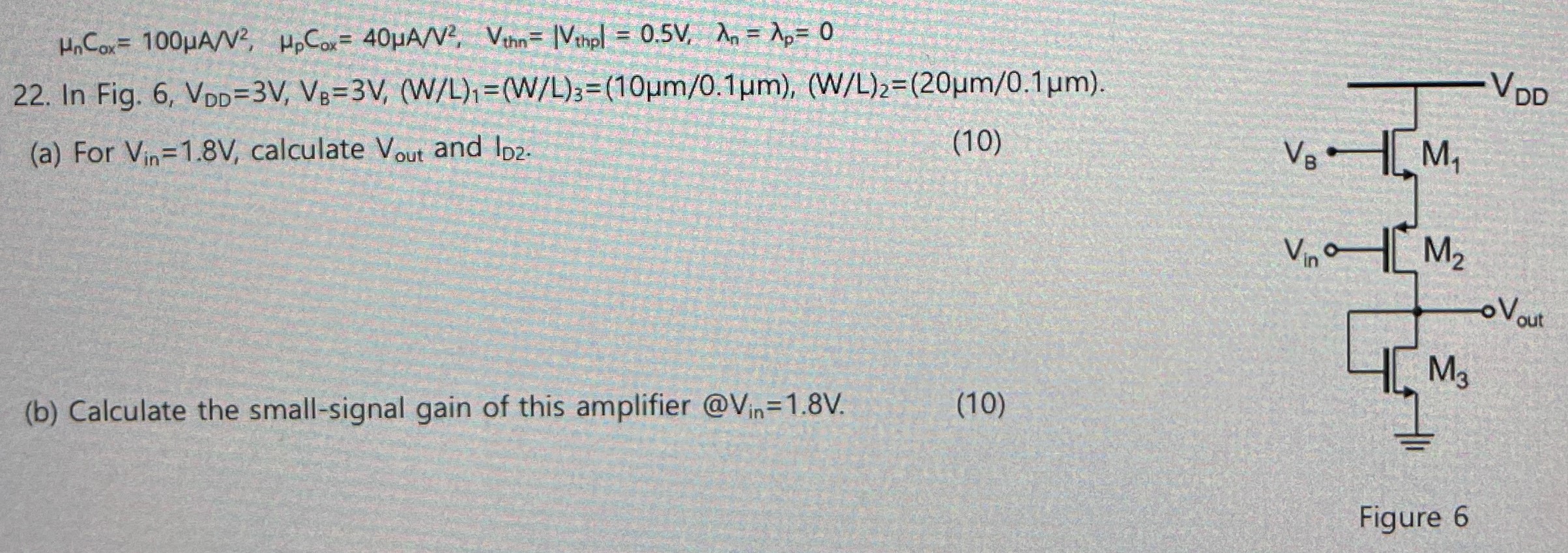22. In Fig. 6, VDD = 3 V, VB = 3 V, (W/L)1 = (W/L)3 = (10μm/0.1μm), (W/L)2 = (20μm/0.1μm). (a) For Vin = 1.8V, calculate Vout and ID2. (10) (b) Calculate the small-signal gain of this amplifier @Vin =1.8V. Figure 6 μnCox = 100 μA/V2, μpCox = 40 μA/V2, Vthn = |Vthp| = 0.5 V, λn = λp = 0



You'll get a detailed, step-by-step and expert verified solution.
 Work With Experts to Reach at Correct Answers
Work With Experts to Reach at Correct Answers